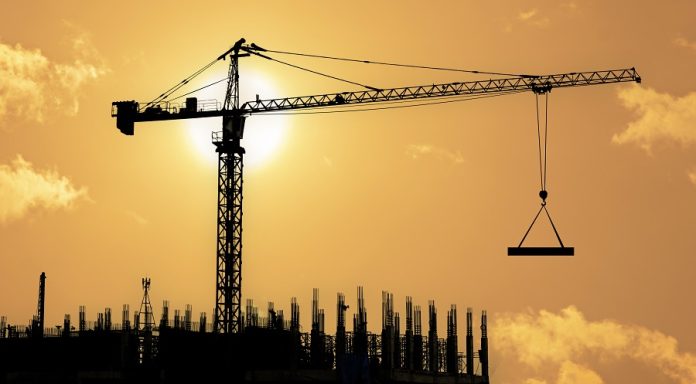If you drive down any significant state or national highway, chances are, you will see construction or expansion of roads and highway networks going on in full swing. Similarly, construction of buildings and residential complexes and townships are also a common sight across most metros and large towns. In the last 12-15 months, several infrastructure projects including roads, ports, highways, housing etc., have taken off with actual construction work happening in a big way. Cynics may disagree and critics may play it down, but even the ground-statistics and data capture this trend. Take for example the 10-month period that ended on 31 January, 2018. The total construction of roads/highways stood at 6,439 kilometres (km), a jump of 17 per cent over the figures for corresponding period last year. Let’s compare another data set. The average per annum construction of highways in India in the three-year period of NDA regime stood at over 6,200 km against around 5,000 km in the preceding three-year period. Today, one cannot dispute the ground reality. Take for example, the ongoing work on the 650-km-long Biju Expressway in Odisha or the Delhi Eastern Peripheral Expressway across Uttar Pradesh and Delhi National Capital Region. The work is virtually in the last stages on the Delhi-Meerut Expressway and the Mumbai-Vadodara Expressway. Very soon the Delhi Western Peripheral Expressway and the Northern Peripheral Road will be completed. Similar examples exist across the length and breadth of the country; after all infrastructure creation is one of the primary responsibilities of any government for speedier development of the nation.
Apart from roads and highways, the civil aviation ministry has already given its nod for the construction of 18 new airports in the country; the work on some has already started and for others, it will start soon. These include Mopa in Goa; Navi Mumbai, Shirdi and Sindhudurg in Maharashtra; Bijapur, Gulbarga, Hasan and Shimoga in Karnataka; Kannur in Kerala; Pakyong in Sikkim; Karaikal in Puducherry; and Dholera in Gujarat among others. More airports are being planned across various states. Likewise a consistent affordable housing (active construction of 3-4 million units) policy push and a slew of initiatives on the development of port sector have led to measurable growth across all allied businesses that support the construction sector. The year gone by has shown growth in demand for steel, Thermo-Mechanically Treated (TMT) bars (used for all kinds of construction), paints, cement, construction equipment and infrastructure financing among others. And the trend continues.
Efforts by the government to restart stalled infra projects by providing necessary clearances, launching hybrid annuity model or “HAM” and creating National Investment and Infrastructure Fund (NIIF), are also beginning to show positive results. Add to it the recent Cabinet clearance to develop 83,677 km of highways including the Bharatmala project worth Rs 6.92 lakh crore, which will usher in positive sentiments to the construction industry for the next few years. Agrees infrastructure expert J. Padmanabhan of CRISIL Infrastructure Advisory. “Roads and highways have taken a lead in driving growth both at the rural and at the national highway level. Major hurdles have been ironed out…Innovation in PPP (private public partnership) such as the introduction of HAM and successful implementation of asset monetisation programme Viz Toll-Operate-Transfer model have further increased the interest of all stakeholders,” he says.
In its forecast for 2018, the World Steel Association predicts an increased demand for steel including TMT bars, cold-rolled and hot-rolled coils that find use in construction, automobile and the white goods segment. Since the National Steel Policy of 2017 also gives preference to domestically manufactured iron and steel products and aims at facilitating consumption of domestic value-added steel in government procurement in sectors such as shipping, ports and airports, the domestic manufacturers will stay buoyant, at least in the short-term horizon of next two to three years.
On the back of a big push to affordable housing, interest rate subvention on home loans, and continuous infrastructure spending, demand for cement too has improved, at least in pockets of south India and parts of north India. Revival in rural housing demand via the ‘Housing for All’ scheme is expected to further fuel the momentum for the construction industry. Therefore, it is no surprise that gradually the sluggish cement industry that supplies over 65 per cent to the real estate sector, is pegged to grow at 5-6 per cent CAGR between FY17 and FY20. Besides, the ongoing investment in power and infrastructure sectors is also expected to boost demand.
Real Demand
Is this for real or simply an illusion of growth, one may ask. The numbers reveal the truth. Take for example the Indian Construction Equipment (ICE) industry that is already on a growth trajectory after four-years of slowdown (2011-2015). The seven leading product categories of ICE — Backhoe Loader, Excavator, Wheeled Loader, Compactor, Loadall, Skid Steer and Mini Excavator — have all witnessed double-digit growth, say industry experts. “Thanks to the continued momentum in the roads and highways sector and green shoots in sectors such as irrigation and railways, 2017 was again a positive year after 2016 wherein we saw the industry grow by 14 per cent, the highest ever,” says Vipin Sondhi, managing director and CEO at JCB India, a leading manufacturer of construction equipment. He says the government’s thrust on building world-class infrastructure in the country has spurred demand for JCB machines in both urban and rural areas. The increased demand of construction equipment has fueled the revenue of JCB India, which saw its gross turnover increase from over Rs 6,000 crore in 2015-16 to around Rs 8,000 crore in 2016-17. Therefore, an increased demand for construction equipment means there are actual projects that require them. So we turned to one of the successful infrastructure finance companies for its take.
Initiatives such as the Bharatmala project is helping road developers such as Bharat Road Network (BRNL), which has started witnessing a profitable growth in its businesses, says Hemant Kanoria, chairman and managing director of Srei Infrastructure Finance (SIFL). BRNL is promoted by SIFL and is constructing a number of road projects. On its own, SREI Infrastructure Finance too, has clocked remarkable growth in the year gone by. The Kolkata-headquartered firm with a pan-India presence witnessed 236 per cent jump in its net profit and a 43 per cent growth in its total income in FY17 where it disbursed loans of over Rs 17,600 crore, a 21 per cent jump over FY16 figures. “We have seen growth in the areas of construction and mining equipment business in the past year which is helping us do better,” says Kanoria, a well-respected industry veteran.
If there is construction, then obviously there should be demand for construction materials. And the basic construction material being cement, we turned to one of the largest cement manufacturers in India for its take. It is no secret that the cement business has seen its own share of challenges in the last few years with slowdown in demand from the housing sector, ban of sand mining, use of pet coke, etc. Despite challenges, the outlook seems positive and bright says Yadupati Singhania, chairman and managing director of JK Cement. Why? Because the infrastructure sector is undergoing a “revolutionary phase” says Singhania. “There are some developments that are likely to drive the industry in the longer run. It was encouraging to see the reinforcement of the government’s commitment to the Bharatmala Project. Also, the finance minister promising construction of 9,000 km highways by the end of FY19 and visions like ‘Housing for All’ by 2020, will surely give a major boost to cement demand in the next financial year,” he says. That is the reason the company is increasing the capacity of grey cement by 4.2 million tons per annum and also investing around Rs 2,000 crore in the brownfield expansion of its facility in Rajasthan and spilt grinding units in Uttar Pradesh and Gujarat in the next 24 months. “Subsequently, we are setting up a greenfield project at Panna in Madhya Pradesh, where we already have a mining lease,” adds Singhania.
After cement, perhaps one of the key construction elements for a building is steel. So we turned to one of the largest manufacturers of TMT bars, Kamdhenu Group. Chairman & MD Satish Aggarwal also says his company has witnessed a robust demand for its products across categories such as TMT bars, paints, etc., that are required for the construction sector. “In FY18, which was marked by implementation of the Goods and Service Tax regime, we saw an increase in volume growth due to gradual recovery in the real estate and infrastructure sectors. In the nine-month period ended 31 December, 2017, our net revenue from operations was up 38 per cent to Rs 803 crore compared to Rs 583 crore in nine-month period ended 31 December, 2016.” Aggarwal says Kamdhenu is witnessing maximum demand from northern and western parts of the country due to consistent and rapid infrastructure development compared to other regions. “We are witnessing robust demand for our products across both rural and urban areas due to tremendous demand for housing and other infra projects,” says Aggarwal.
Another key indicator of active economic activities, particularly in the infrastructure sector, is the growth in the production and sales of commercial vehicles such as heavy-duty trucks that ferry building materials to and fro from the construction site. So how did this sector perform in the past year? “The heavy-duty truck segment has witnessed a growth of 20 per cent in the last 15 months and is continuing (to grow),” says Vinod Aggarwal, managing director and CEO of VE Commercial Vehicles, a joint venture between the Volvo Group and Eicher Motors. Expanding on the reasons for such robust growth in the commercial vehicle segment, Aggarwal says: “This spurt could be attributed to a variety of reasons including stricter implementation of overloading norms by some states, segmental shifts taking place with the market moving from basic economy trucks to higher tonnage and value products (tractor, trailer and multi-axle trucks) for higher economics of operations and profitability among others,” he adds. “With these factors and numerous projects that are underway, the outlook for the industry looks bright. Further, the implementation of emission norms, scrappage policy, and pent-up demand will sustain the growth momentum for medium and heavy commercial vehicles and the sales are expected to close this fiscal year at a six-year high,” says Aggarwal.
Housing Push
The Pradhan Mantri Awas Yojana (PMAY) or ‘Housing for All’ by 2022 is yet another driver of demand for construction and supporting businesses. Hardeep Singh Puri, the minister of state (independent charge) for Housing and Urban Affairs, recently said that out of the required 12 million houses by 2022, nearly 4 million houses have already been sanctioned under the PMAY scheme. As per the RBI Bulletin of January 2018, over 1.4 million houses under PMAY are grounded for construction while nearly 3 lakh such houses have been completed.
Says Ashish R. Puravankara, managing director of Puravankara and president of CREDAI Bangalore: “The Indian real estate sector is poised at a better position today with the market and consumer sentiment bouncing back. The growth of affordable housing segment has further augmented the market as mid-size home buyers are opting to buy homes that come with certain quality, features and good amenities.” Seeing big demand in the affordable housing segment, Puravankara expects developers to launch more projects in this category. Agrees Niranjan Hiranandani, co-founder and managing director of Mumbai-based Hiranandani Group and president of National Real Estate Development Council (NAREDCO), an apex industry body of the developers. “Only building houses is not a good idea if there is no electricity, water, hospital and basic infrastructure. In the last three to four years, there has been focus on overall infrastructure development. Let’s take the example of the Mumbai region. We have a budget of Rs 1.7 lakh crore for six key infra projects. This was unheard of in previous years. On top of the existing 190 km of railway tracks in Mumbai, now we are adding another 170 km of metro rail routes in the next six years. Then there are the plans for Trans-Harbor Bridge, coastal roads and Navi Mumbai airport. So along with housing, other infrastructure will be coming up and driving the construction boom.” Going forward, the two most important things for affordable housing will be slum redevelopment (without shifting people) and rental housing. “A policy framework on rental housing is coming soon that will further drive the housing market. The target is to create surplus economy in housing. Then the builders can build housing for rental,” adds Hiranandani.
New Opportunities
Sustained growth in any sector leads to innovations, therefore the allied industries supporting the construction business are no different. Kanoria of SREI Infrastructure Finance says the company’s recent initiative iQuippo has transformed the entire customer experience of buying/selling infrastructure equipment. “Right from assisting original equipment manufacturers to marketing their products, enabling and guiding potential buyers in identifying the right assets, iQuippo plays an important role in financing the asset, deploying it, offering insurance, maintenance and operational services, making available spare parts, re-deploying the asset in multiple project sites, identifying buyers for used assets and providing all kinds of fee-based services till the asset is finally disposed,” says Kanoria.
Sensing an uptake in demand for cement in the near-term, JK Cement re-launched two of its brands last year, namely JK PrimaxX and JK Super Cement. “After an extensive market research and brand study, we decided to revitalise our grey cement brand JK Super Cement, with a new visual identity and brand positioning. JK PrimaxX was also re-launched in the market in response to the ever-increasing need for a white cement-based primer for external surface application,” says Singhania of JK Cement.
Due to high demand for specialised construction equipment, there is increased usage of “smart and digitally advanced machines”, says Sondhi of JCB. ”JCB is leading the integration of ‘Internet of Things’ and ‘Big Data’ in its products and services through an advanced telematics technology called JCB Livelink, an effective fleet management system that helps customers remotely monitor and manage their machines. Today, over 60,000 Livelink-enabled machines are working successfully in India. This technology aims to deliver constructive, real-time information to increase productivity and efficiency,” adds Sondhi.
Aggarwal of Kamdhenu says the TMT steel bar industry is witnessing consolidation post-GST implementation. “We expect to benefit from this trend to continue. Recently, we launched an innovative product KamdhenuNxt, the next generation interlock steel in the market, and also launched Kamoproof and Kamocrete for waterproofing solution that offers added strength and durability which modern construction demands,” adds Aggarwal.
But with opportunities, come challenges too. On-time and sustained completion of projects hold the key to ensure that there are no time and cost overruns. If all goes as planned, very soon the country will be able to showcase the best of roads, airports and housing to the whole world.





































